PDAC IN THE NEWS AN IN-DEPTH LOOK AT S-IMEW 2025
THE 2025 MCW AWARD THE 2026 PDAC AWARDS RECIPIENTS THE WORLD’S OLDEST MINE
THE VOICE OF MINERAL EXPLORATION FALL 2025

PDAC IN THE NEWS AN IN-DEPTH LOOK AT S-IMEW 2025
THE 2025 MCW AWARD THE 2026 PDAC AWARDS RECIPIENTS THE WORLD’S OLDEST MINE
THE VOICE OF MINERAL EXPLORATION FALL 2025
LOOKING AHEAD TO THE PROGRAMMING AND OPPORTUNITIES AT THE WORLD’S PREMIER MINERAL EXPLORATION & MINING CONVENTION


CORE is produced by staff primarily located in Toronto, Ontario, on the traditional territory of the Mississaugas of the Credit First Nation, the Haudenosaunee, the Wendat, also known as the Huron, the Chippewa, the Anishnabeg and all other Indigenous nations that have lived on these sacred lands since time immemorial.
As the voice of mineral exploration and development in Canada, PDAC is committed to reconciliation through respectful dialogue and the creation of meaningful and mutually-beneficial partnerships between First Nations, Inuit and Métis communities and industry.
We respect that as an industry that operates the world over, we engage with organizations and individuals far beyond these lands, and wish to acknowledge all Indigenous lands and peoples across the world, wherever you are reading this from and call home.

FALL 2025
PRODUCED & PUBLISHED BY PDAC’s Communications Dept. 800-170 University Avenue Toronto, Ontario M5H 3B3 Canada 416.362.1969
PUBLICATIONS EDITOR & DESIGNER
Andy Stanleigh
PUBLICATION DATE November 13, 2025
PHOTO CREDITS
PDAC Archives
Used with permission
CONTRIBUTORS
Ariya Andrighetti
Alexandra Armstrong
Scott Barber
Lynn Bodwell
Jeff Killeen
Ran Maoz
Krishana Michaud
COPYRIGHT ©2025 PDAC
All rights reserved
FOLLOW PDAC the_PDAC thePDAC the PDAC PDAC_official ThePDAC
VISIT US ONLINE pdac.ca
PDAC IN THE NEWS
Open House highlights, 2026 CMHF inductees revealed, PDAC at youth and industry events, and reflections on the National Day for Truth and Reconciliation.
Preview the programming, events and key dates for PDAC 2026: The World’s Premier Mineral Exploration & Mining Convention.
2026 PDAC AWARD RECIPIENTS
Introducing the 2026 recipients and their achievements, plus the legacy of the PDAC Awards, presented annually since 1977. 4 8 1 8
MCW GEOSCIENCE AWARD 2025
In the month of October 2014, mining activity closed at the Ngwenya Mines in the Kingdom of Eswatini, South Africa, which is the site of oldest known mining activity in the worlddating to around 43,000 BC. 2 2 28 40
An engaging interview with Laurentian University’s Maggie Laverge – this year’s Mary-Claire Ward Geoscience Award recipient.
S-IMEW 2025 FEATURE
Inside the 2025 Student-Industry Mineral Exploration Workshop, with coverage of this year’s mental-health session for remote workers.
THIS MONTH IN HISTORY

4 18 8

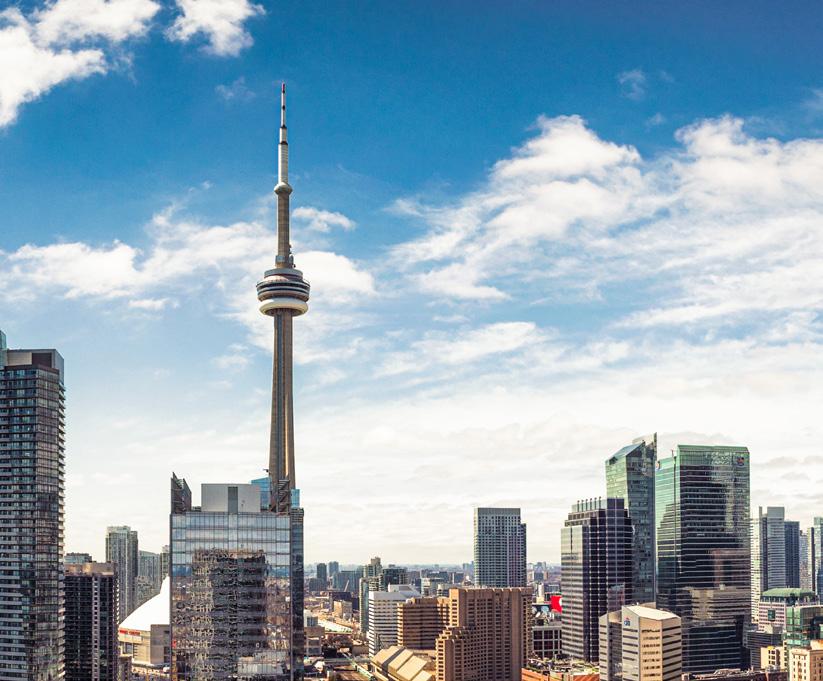
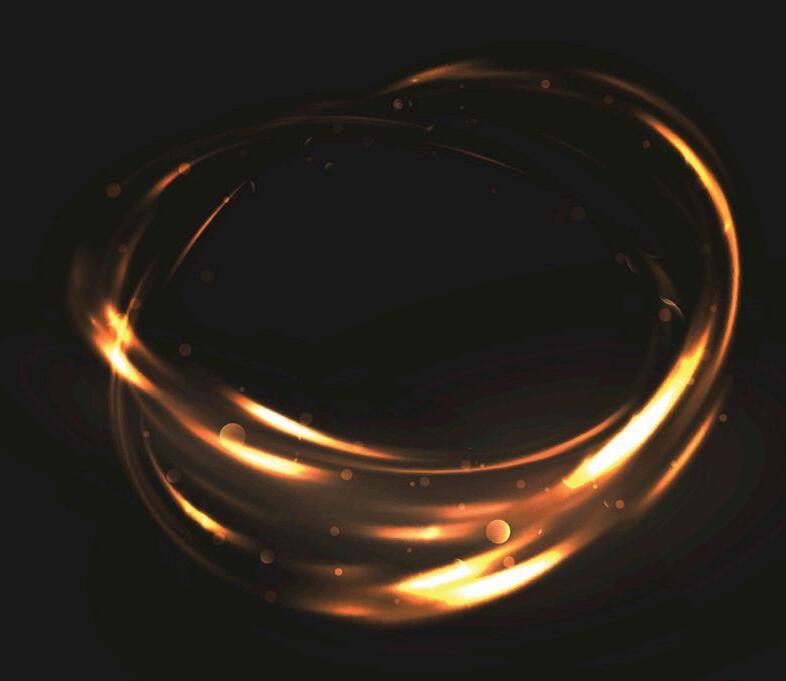
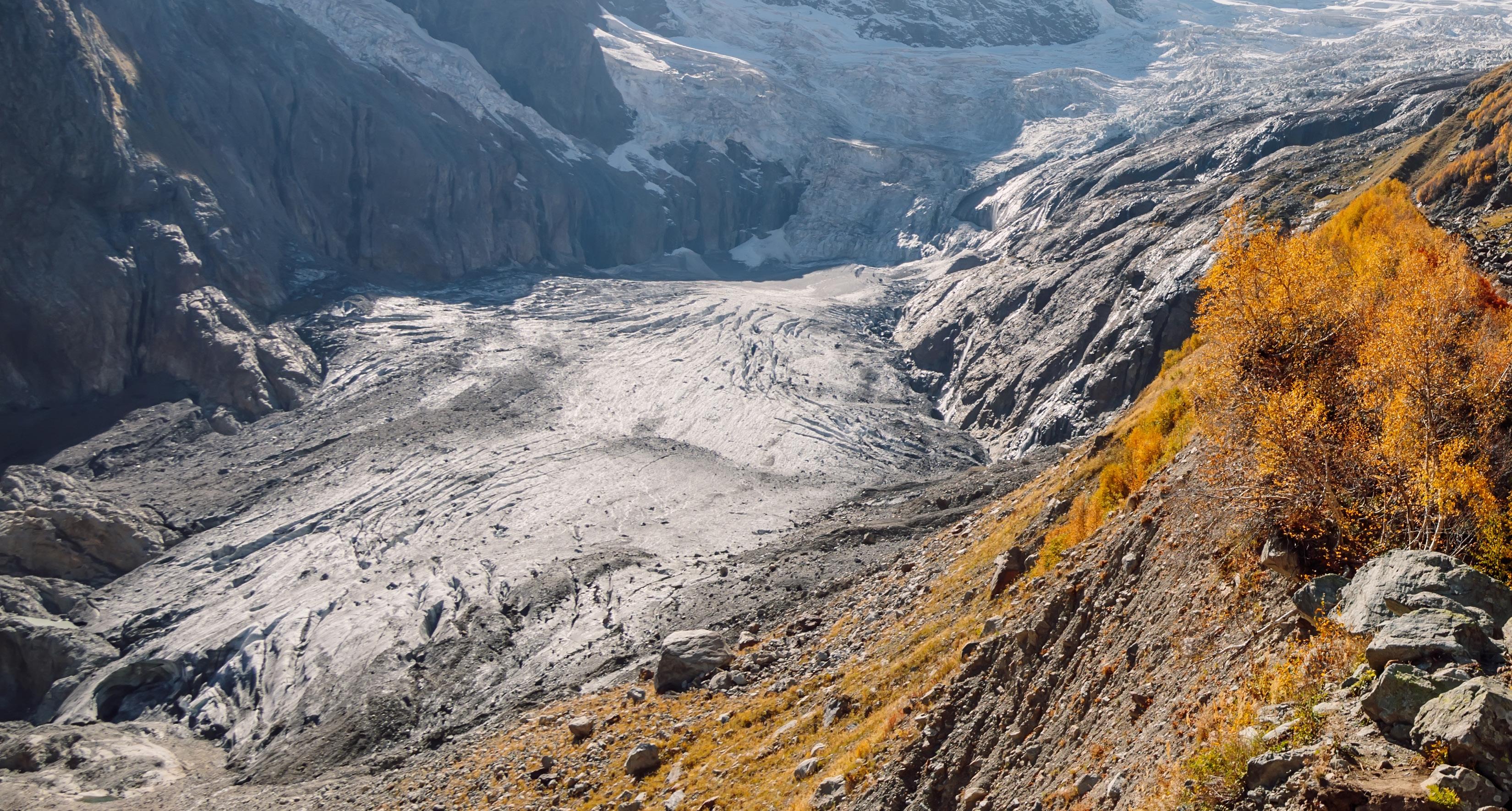
On Sept. 23, PDAC’s third annual open house hosted over 100 members for the unique opportunity to meet PDAC directors, committee members, association staff and industry colleagues. The event –with record attendance – showcased PDAC policy and programming initiatives, including the Student & Early Career program, Geoscience and Innovation, Access to Capital, Sustainability and Indigenous Affairs.
Attendees also gained insights into impactful programs from Mining Matters and the Mining Industry Human Resources Council (MiHR), aimed at attracting the next generation of talent. Mining Matters highlighted educational activities for K-12 students and educators, while MiHR presented its “Mining Needs You” career awareness campaign –featuring the interactive Mining Career Seeker Dashboard. “The Mining Industry Human Resources Council was thrilled to participate in PDAC’s open house,” noted Will Meyer from MiHR. “The event provided an excellent opportunity to showcase our partnership.”
The lively atmosphere included prize draws, with members winning All-Access Convention passes, PDAC memberships and swag. Michelle Wang, sharing her enthusiasm from the evening event, stated, “Attending the PDAC Open House was a fantastic experience! The delicious food and relaxed atmosphere allowed for great conversations with professionals from mining and other industries. The welcoming vibe made it easy to connect … I look forward to staying involved and volunteering at future PDAC events.”


The PDAC Open House was a fantastic networking opportunity and an important moment to raise the profile of our education and outreach efforts.
- Laura Clinton Mining Matters


The Canadian Mining Hall of Fame (CMHF) will induct four industry leaders in 2026: David Harquail, Don Lindsay, Catherine McLeod-Seltzer and Gordon Garfield Morrison.
“These individuals are leaders and role models within our community, and their immense contributions have left a lasting legacy in shaping a more sustainable, impactful and prosperous mining industry that benefits communities across Canada and around the world,” said the CMHF, who will welcome the four new members at the Canadian Mining Hall of Fame Dinner & Induction Ceremony in Toronto on Jan. 8, 2026.
The CMHF is a charitable organization founded in 1989 by The Northern Miner, the Mining Association of Canada, PDAC and the Canadian Institute of Mining, Metallurgy and Petroleum to recognize exceptional leadership and achievements in mining. As a CMHF member organization, PDAC’s Awards Committee accepts nominations each spring and may put forward up to three candidates to the CMHF Board annually.
Attracting the next generation of mineral exploration and development professionals is a strategic priority of PDAC. With this, staff and volunteers from the association’s Human Resource Development (HRD) committee attend events throughout the year to engage with students and early-career professionals.
This past September, PDAC exhibited in Hamilton at McMaster University’s annual career fair, raising awareness about the many career opportunities within the mineral industry. PDAC also brought this message to the Partnerships for Employment (P4E) Career Fair in Waterloo. P4E is produced by the University of Guelph, University of Waterloo, Wilfrid Laurier University and Conestoga College, and is the largest of its kind in Canada. PDAC is also proud to have been a partner in Laurentian University’s 2025 MineOpportunity Games, hosted by the university’s Goodman School of Mines. Held in October, this series of dynamic activities for high school students introduces them to the various technologies, engineering, social responsibilities, geosciences, business aspects and more from the mineral industry.
PDAC will also be partnering with Mining Matters and the Mining Industry Human Resources Council (MiHR) to host the “Mining Needs You” booth at the ‘Level Up!’ career fair. This multi-day event will be held at the International Centre in Mississauga in November, and Ottawa’s EY Centre in December.

PDAC is proud to engage the mineral exploration and mining community at events across Canada and abroad. This fall, our president, board members and staff delivered remarks and moved key priorities forward for more than 8,200 members and Canada’s mineral sector
Internationally, PDAC President Karen Rees spoke at the Fennoscandian Exploration and Mining conference in October. Held in Levi, Lapland, Finland and attended by over 1,000 participants from dozens of countries, Rees gave a keynote speech titled, “Propelling Canadian Mineral Explorers – Connecting Strategies to Real-World Impacts,” that detailed a multipronged roadmap for governments and policymakers to cement Canada’s leadership in responsible exploration and development and to provide a stable, longterm supply of minerals to our allies.
Rees also brought this presentation to Canada’s east coast in November, where she was joined by PDAC Executive Director Lisa McDonald and Florence MacLeod, Manager, Member Engagement & Outreach at the Mineral Resources Review (MRR) conference. MRR is an annual, week-long event produced by the Newfoundland and Labrador Branch of the Canadian Institute of Mining, Metallurgy and Petroleum (CIM) and the Department of Industry, Energy and Technology, Government of Newfoundland and Labrador,
which attracts over 1,000 mining professionals from across the world. This premier event is also where PDAC co-hosted an industry roundtable, followed by the networking event ‘Rocks and Stocks Kitchen Party’ with Mining Industry NL.
This past September, Rees had also spoken at Ottawa’s Mineral Outlook Dialogue. This annual forum is co-hosted with Canadian Minerals and Mining, the Mining Association of Canada and PDAC, and hosts government, Indigenous individuals, NGOs and academic representatives in one space to discuss and help shape Canada’s mineral exploration and mining policies.
Jeff Killeen, PDAC’s Director, Policy & Programs was a guest speaker at a session titled, “Mineral Exploration: What is the role of government?” at the Intergovernmental Forum on Mining, Minerals, Metals and Sustainable Development (IGF)’s Annual General Meeting held in Geneva, Switzerland. This session examined the role that junior companies play within the larger exploration field, and how governments can best provide the permitting and funding tools to attract these important companies to enhance the global mineral community.
Additionally, Killeen presented in Montreal, Que., in October for the Quebec Mineral Exploration Association’s (QMEA) Xplor convention. Florence MacLeod and PDAC’s Krishana Michaud, Manager, Student & Early Career Program were also at Xplor, engaging with attendees in the Coreshack event space.

Reconciliation is a journey that takes time, for some more than others.
- Lana Eagle Lana Eagle Consulting

Canada’s National Day for Truth and Reconciliation was observed this year on Sept. 30. Established in 2021, this national day of observance invites remembrance and reflection on the legacy of residential schools and their enduring impacts on Indigenous Peoples and communities across Canada. Advancing mutually beneficial and respectful relationships between industry and Indigenous Peoples is a top priority for PDAC. The Indigenous Affairs Committee, the Indigenous Program at the PDAC Convention, and practical tools like the Community Engagement Guide and Driving Responsible Exploration support that work.
PDAC’s Indigenous Affairs Committee includes mineral exploration experts and Indigenous leaders, whose goal is to guide policies and offer best practices for developing mutually-beneficial partnerships between communities and the industry.
“Reconciliation is a journey that takes time, for some more than others,” says Indigenous Affairs Committee co-chair Lana Eagle. “At first your head acknowledges the need for change, and it may start from a place where your thoughts are that ‘they’ must change. Your actions at first may have to be intentional; eventually, through experience, your heart takes over and your desire for reconciliation comes from deep within, and then you realize that you have changed.”

The latest available statistics show that Indigenous individuals comprise 12 per cent of our industry’s labour force, making the mineral exploration and mining sector the largest private-sector employer of Indigenous Peoples in Canada. PDAC also believes that early engagement is one of the cornerstones of building relationships between Indigenous communities and our industry. To learn more about how our association continuously works to support the development of positive relationships between Indigenous communities and the industry, visit pdac.ca/indigenousaffairs

JOIN US MARCH 1-4, 2026 IN TORONTO FOR THE WORLD’S PREMIER MINERAL EXPLORATION AND MINING CONVENTION
Year after year, the PDAC Convention is the place to be for unveiling the latest market insights, advances in technology, and for fostering essential partnerships.
- Raymond Goldie PDAC Past President
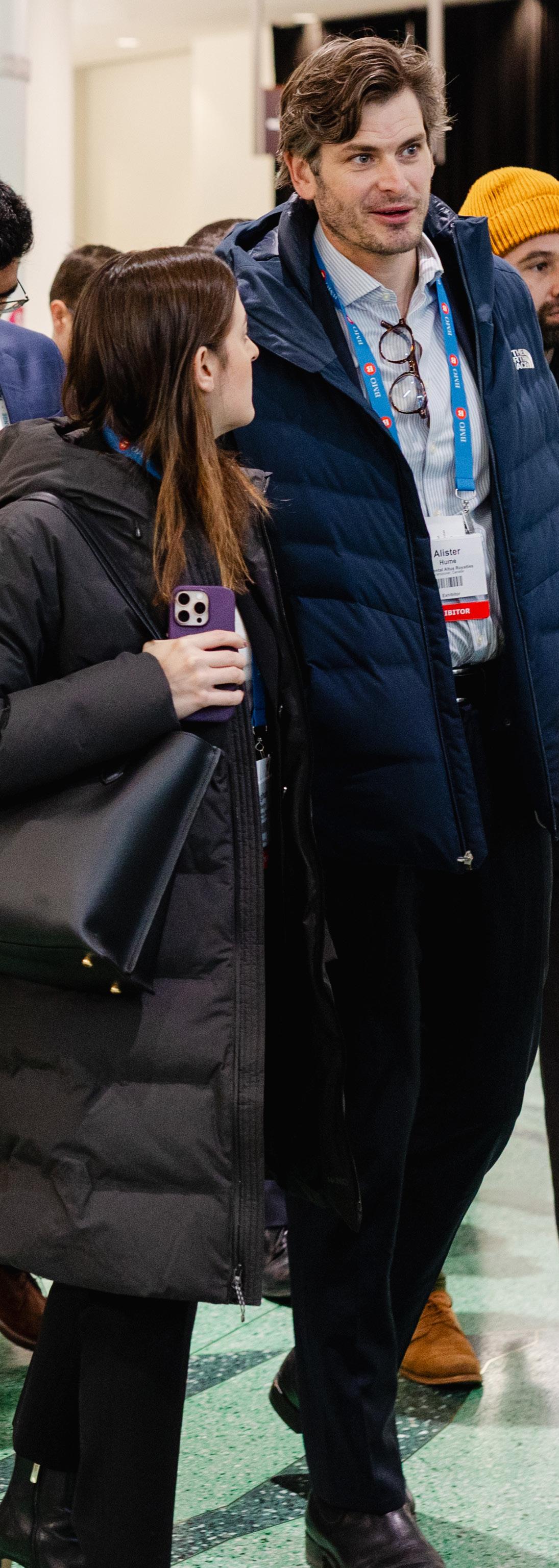
PDAC’S award-winning annual convention returns, featuring engaging exhibits, industry-leading programming, events, networking opportunities and more.
The following pages are a preview of what’s in store for 2026’s world’s premier mineral exploration and mining convention, plus some exciting stats from 2025.
Ahead of the preview, here are some important dates to note for the upcoming event:
Registration opens this December. pdac.ca/registration
The early registration deadline is Feb. 6, 2026.
The deadline to purchase tickets for the Awards Celebration & Nite Cap, Lunch Social and Short Courses is Feb. 20, 2026. Onsite sales are subject to availability.
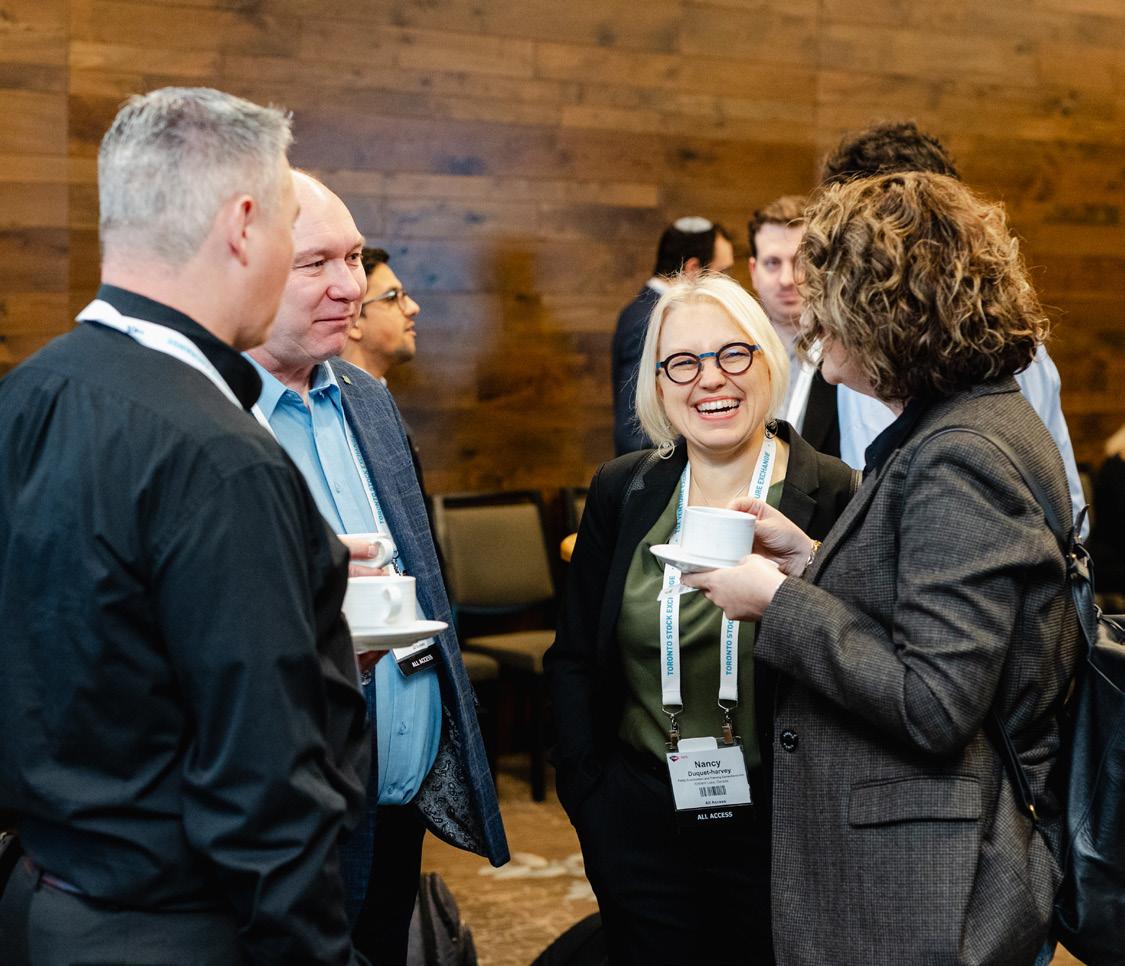
PDAC 2026 will include more attractions, lounges, and improved services onsite to enhance your experience. Learn more at pdac.ca/convention/ services-onsite-2026
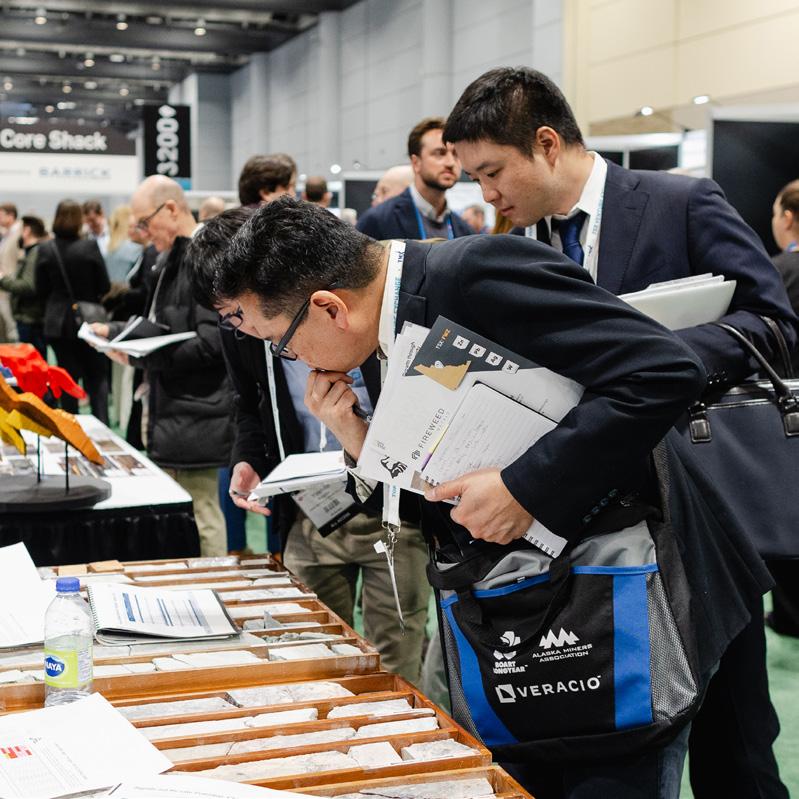
27,353
ATTENDEES FROM 126 COUNTRIES IN 2025
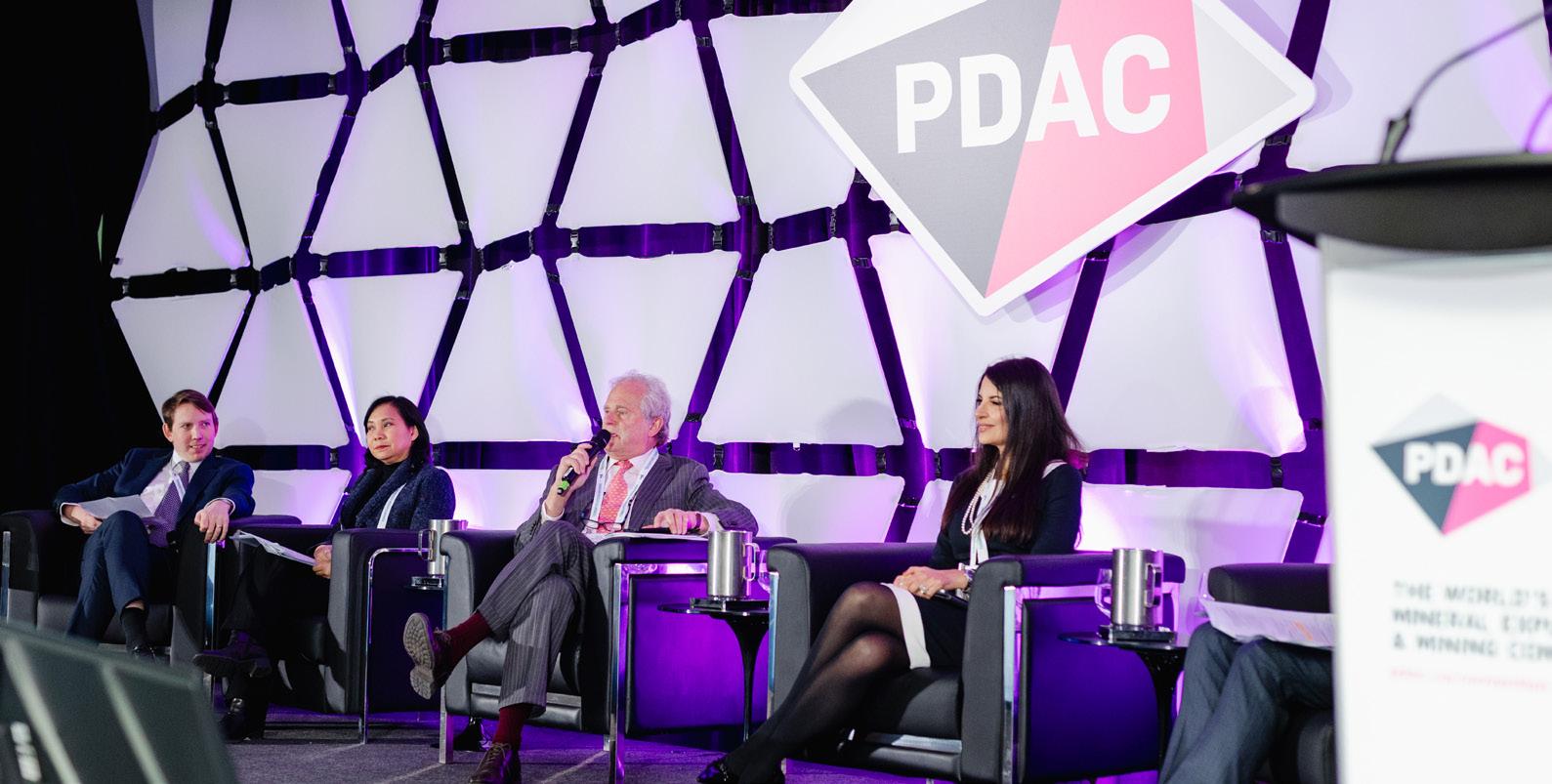
1,228 EXHIBITORS IN 2025 SAVE THE DATE! March 1-4, 2026


705 PRESENTERS IN 2025

PDAC 2026 will showcase another full slate of exhibitors from across the mineral exploration and mining spectrum.
THE NORTH IS CALLING! PDAC WILL HOST THE LARGEST NUMBER OF EXHIBITORS IN THE SHOW’S HISTORY, INCLUDING AN EXPANDED TRADE SHOW NORTH SPACE THAT WILL FEATURE MORE BOOTHS, MORE ATTRACTIONS, AND MORE FUN THAN EVER BEFORE.

Visit over 800 exhibitors showcasing the world’s leading technologies, products and services, and meet government representatives from across the globe. This includes the Northern Ontario Mining Showcase (NOMS) – the largest pavilion at PDAC featuring over 110 exhibitors and interactive displays showcasing innovative products and services to help plan, build, maintain, and rehabilitate projects around the world!
Providing a unique venue for companies to display their core samples. Attendees can get up close to new or ongoing projects that are generating exciting drill results. The latest discoveries from all corners of the Earth will be featured along with maps, charts and technical information.
Discuss investment potential with over 400 junior mining companies, mid-sized producers, major mining companies, financial institutions and prospectors to discover new business opportunities.
Get to the heart of the industry with a visit to the Prospectors Tent. Self-employed prospectors will be there to discuss their maps, samples and results.
| PDAC-SEG
MINERALS COLLOQUIUM (SMC)
The SMC brings together geoscience students and industry professionals to highlight innovative student research on projects essential for the successful evolution of the modern mining industry.
Students (BSc, MSc, PhD) working on projects linked to mineral deposits including mapping, mineralogy, geochemistry, geophysics, environmental and hydrogeology have the opportunity to share their research with an audience of academics and industry professionals
An initiative aimed at showcasing the diverse work of talented Indigenous artists and artisans from coast to coast to coast.
Exhibit spaces sell quickly. For more information and to apply, visit: pdac.ca / convention / exhibits
The annual convention hosts a wide range of presenters, industry experts and facilitators offering their knowledge, strategies, new concepts, case studies and more.
PDAC 2026 WILL FEATURE INCREASED TRANSLATION AND ACCESSIBILITY RESOURCES. FOR THE FIRST TIME, ALL SESSIONS FOUND IN THE ‘SCHEDULE AT A GLANCE’ – INCLUDING PRESENTATION & RECEPTION ROOMS – WILL INCLUDE AUTOMATIC SPEECH RECOGNITION (ASR) ACCESSIBLE FROM YOUR PERSONAL DEVICE FOR REAL-TIME TRANSLATION INTO 67 LANGUAGES.

Access to capital is the lifeblood of the mineral exploration industry. This program creates a forum for dialogue on a range of topics related to the financing of mineral exploration.
This popular series features up-to-the-minute information on select exploration and development companies’ current activities and investment potential. This series continues to be of strong interest to investors, highlighting the scope of commodities and stages of development represented at the convention, including micro-cap companies.
Exploration Insights will showcase research on new concepts and ideas relevant to our industry today. This series of highprofile technical and academic presentations will offer insight into current and topical subjects.
The Keynote Program features four themes designed to inspire and educate: commodity outlook, mining industry outlook, technology and innovation, and discovery of the year. Presenters will discuss new and exciting concepts and explore the compelling challenges of mineral exploration and development in 2026. The premium lineup will feature one prominent industry leader each day, culminating in the final keynote which will be given by the Thayer Lindsley Award recipient.
Uncover the fundamentals of building cooperative, respectful and mutually beneficial partnerships between Indigenous communities and the minerals industry. This program brings Indigenous-owned companies, communities and individuals together with industry representatives to share experiences, exchange ideas and network. Indigenous leaders, industry experts and legal professionals share their visions of prosperity and reconciliation with PDAC’s global network.
Top newsletter writers and other professionals who inform investment decisions in the mining industry gather at this session to present their thoughts, charts, research reports, and ideas on the criteria they use to select profitable investments in the resources sector.
Learn from industry leaders as they share key insights and case studies throughout this exclusive series of presentations.
These are in-depth educational sessions led by presenters with expertise in a variety of subject matter. Sessions range from a half-day to two days in length. Short Courses are ticketed so purchase online – starting this December – before they sell out!
This program allows students and early-career individuals an unrivalled opportunity to connect with industry professionals from around the world. Learn about the diverse range of careers and attend engaging presentations to stay up to date on exciting industry developments.
Join a facilitated multi-stakeholder dialogue and peer learning on key issues related to responsible exploration and mining. This program features presentations and conversations that examine the innovative ways in which mineral exploration and mining companies are working to improve their sustainability. Both challenges and successes will be presented, as well as lessons learned.
Industry experts discuss current and emerging trends, technologies, research and analysis in a dynamic series of presentations. Presenters share their practical experience, insights and a look to the future. Topics include commodity outlook, critical minerals, geophysics, diamonds, technology and more.
Don’t miss these exclusive sessions – visit international mining jurisdictions and companies launching a product, hosting receptions, presenting a workshop or a special presentation

These presentations will shine a light on some of our most distinctive and innovative exhibitors.
Don’t miss these valuable networking opportunities!
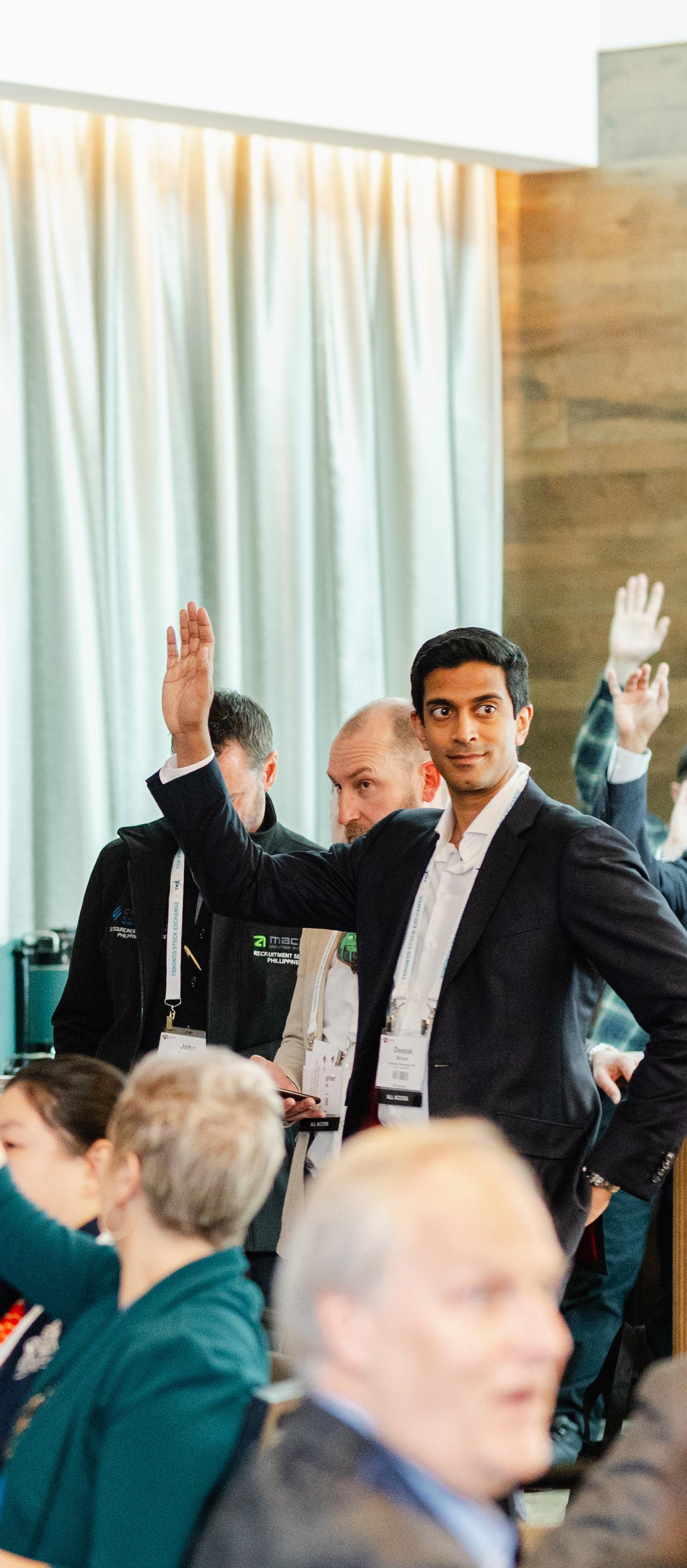
| OPENING CEREMONIES
Join Karen Rees, PDAC President, and other special guests as we mark the official opening of PDAC 2026.
| THE NETWORK: GOLD RUSH GATHERING
Join us for an unforgettable evening of networking and fun at an event where conversations will strike gold. We invite you to engage with the Klondike/Western theme, participate in games, win prizes, and expand your network over cocktails and small plates. This energetic event will blend entertainment with opportunity – ensuring you leave with new connections and stories worth sharing.
| CAFFEINATION STATION
Be one of the first 1,000 attendees daily to enter Trade Show North and receive a free coffee or tea as you stroll and visit the exhibitors.
| LUNCH SOCIAL
Skip the lunch lines and join us at the buffet Lunch Social. Looking for investment opportunities, professionals to collaborate with, or are you a recent graduate looking for work? Buy a ticket and enjoy casual socializing and networking with friends, colleagues and clients.
| COFFEE CONNECTIONS
Join us in Room 401 each morning for a complimentary coffee to start your day right while chatting with attendees and exhibitors.
| SNACK SHACK
Craving something sweet or savory?
Stop by the Snack Shack in Trade Show North to pick up your daily complimentary afternoon treat.
In partnership with Precious Metals Summit Conferences, PDAC offers professionally organized one-on-one meetings, which bring qualified investors together with companies’ senior management. This exclusive program is offered only to a select group of confirmed Investors Exchange and Core Shack exhibitors, carefully screened, qualified investors and portfolio managers from around the world.
Women in Mining Canada (WIMC) is pleased to host this annual awards ceremony and networking event. Celebrate the Trailblazer Awards Series winners, and network with other industry professionals.
This event provides an opportunity for students, early-career and industry professionals to network in a relaxed environment. The recipient of the Mary-Claire Ward Geoscience Award and the 2026 Student-Industry Mineral Exploration Workshop (S-IMEW) participants will be announced. Student members will be entered into a draw to receive one of five $500 tuition top-up awards. Student groups from Canadian post-secondary institutions can apply for travel funding to help cover the costs of getting to Toronto.
This is the premier evening of the 2026 Convention, honouring excellence with the presentation of the prestigious PDAC Awards. Guests will enjoy a welcome cocktail reception, a three-course gourmet dinner with fine wines, and a lively Nite Cap reception. The evening offers unparalleled access to award recipients and industry leaders, along with unique networking opportunities in an elite setting. This all-inclusive experience is the Convention’s “can’t miss” night – celebrating achievement, connections and the future of the industry. Buy your ticket when you register for the convention.
Close out the convention in true rock-and-roll style at this event that promises an unforgettable evening of live music, networking and fun. Dance to hits from the ’70s, ’80s, and ’90s, capture the moment at the photo booth surrounded by bold colours, glow sticks, neon accents and the energy of the rock era. Celebrate a rock-solid finish to PDAC 2026.

Don’t miss the opportunity to meet fellow PDAC members and play an important role in guiding the association’s future at the Annual General Meeting .
PDAC 2026 will also host a number of invitation-only events, including the PDAC New Members Networking Reception , Life Member Luncheon , and S-IMEW Alumni Reception .
For a comprehensive list of PDAC 2026 events and networking opportunities, visit pdac.ca/convention/ events-networking Events and programming are subject to change.
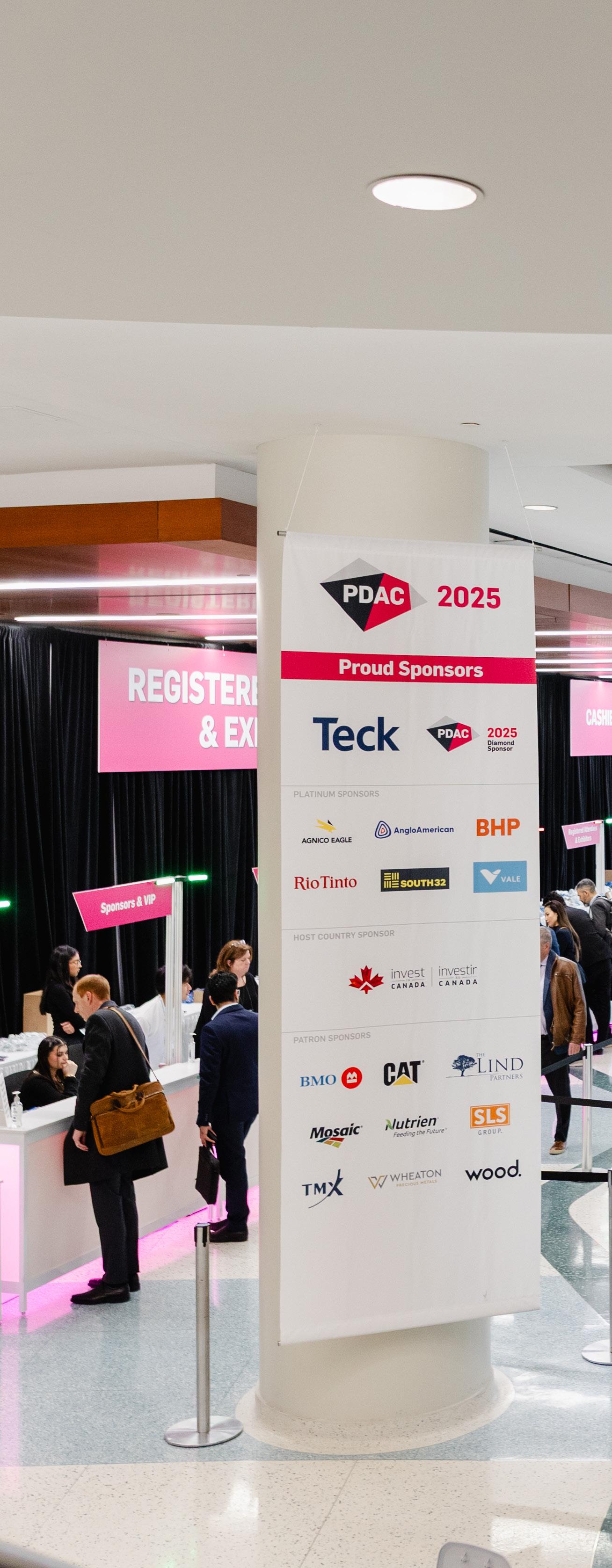
PDAC would like to thank all of our Convention sponsors for their valued contributions and support.
We began to sponsor the event to make sure we’re in a position to be part of the conversation, and also start to shape a little bit of what’s being talked about with critical metals and critical minerals. It’s absolutely essential for us that we’re... using platforms like PDAC to collaborate, meet our partners, and build new opportunities.
- Simon Collins Chief Development Officer South32
Limited sponsorship and marketing opportunities are still available for PDAC 2026.
Maximize your brand exposure with targeted digital, print, and experiential marketing campaigns that will help your company stand out from competitors. Reach more than 27,000 attendees from over 125 countries, including key influencers and decision-makers from the banking, investment, government, mining, and education sectors.
For more information, visit: pdac.ca/convention/sponsorship
Get involved with PDAC 2026 as a volunteer or accredited media.
| MEDIA ACCREDITATION
PDAC provides no-cost accreditation to professional journalists who cover the mineral exploration and mining industry and/or capital markets for print, broadcast and online media. Apply today by visiting pdac.ca/convention/media-accreditation
| VOLUNTEER OPPORTUNITIES
Save money and network with industry professionals at the convention! Volunteer your time in exchange for a complimentary All Access Pass, volunteer apparel, food vouchers, a gift card and a volunteer certificate. Visit pdac.ca/convention/ volunteers to apply today.

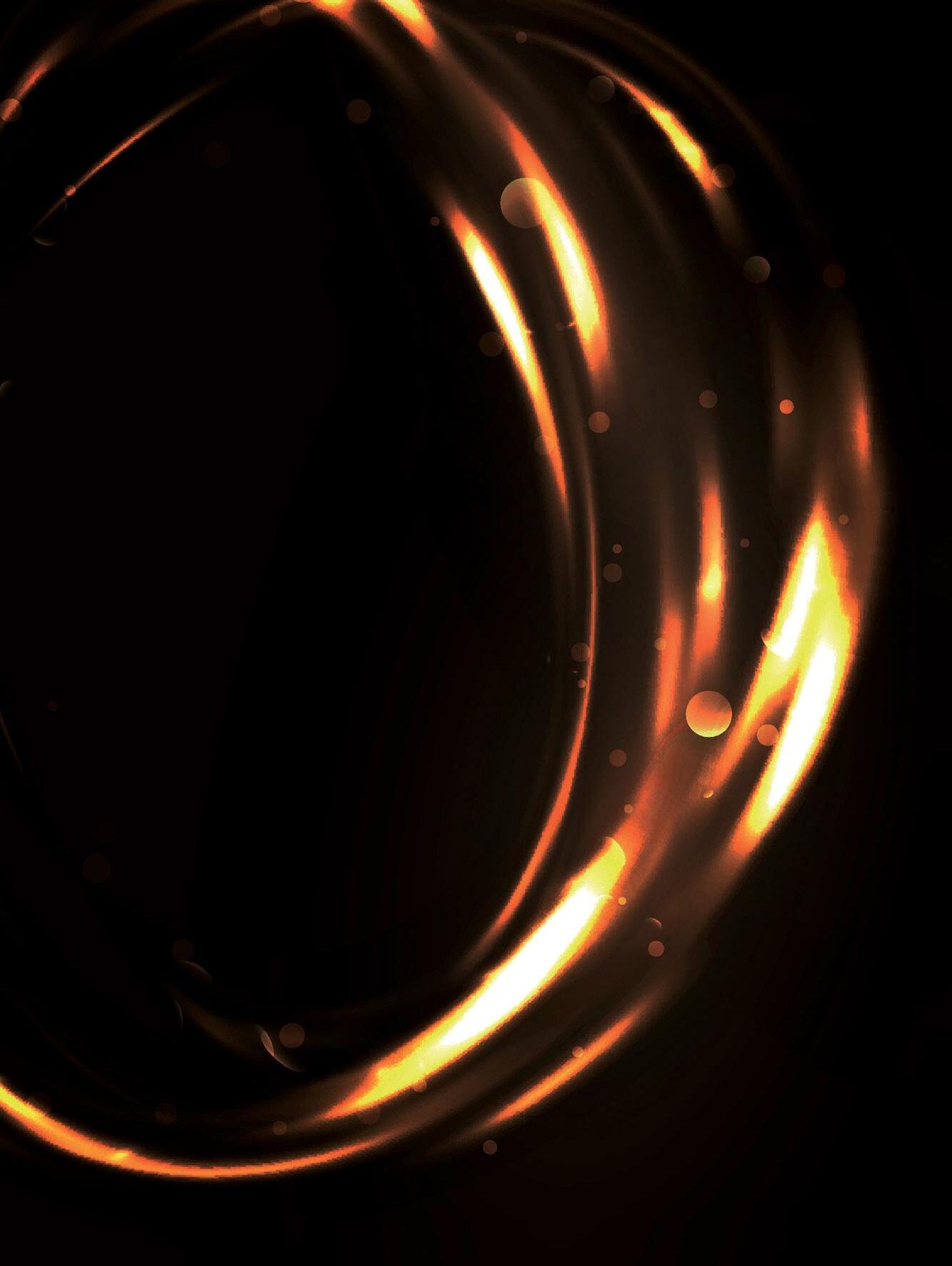
On November 4, 2025, PDAC announced the recipients of its 2026 Awards, honouring five outstanding companies and organizations for their contributions to the mineral exploration and development industry.
The five awards presented this year are:
| The Canadian Royalties Exploration Team for the Bill Dennis Award , given for a Canadian discovery or prospecting success;
| The Des Nedhe Group for the Skookum Jim Award , given for Indigenous achievement in the mineral industry;
| Blue Lagoon Resources for the Sustainability Award , given for outstanding leadership in environmental protection and/or good community relations;
| The AngloGold Ashanti, Renaissance Gold, and Callinan Royalties teams for the Thayer Lindsley Award , given for an international mineral discovery;
| Equinox Gold for the Viola R. MacMillan Award , given for company or mine development.
For almost half a century, the PDAC Awards have been recognizing top industry performers for their contributions to the mineral exploration and development sector.
The awards program was introduced in 1977 by PDAC Past President Edward Thompson . Thompson, who served as the association’s president from 1977-1979, is said to have been inspired to create the PDAC Awards program after attending the Canadian Institute of Mining, Metallurgy and Petroleum’s awards ceremony in 1977. T he very first award – the Bill Dennis Prospector of the Year Award, named after PDAC Past President Bill Dennis (1965-1966) –was given the following year.
“Canada was built to a large extent on mining, and Canadians owe much to our prospectors and mine finders for their standard of living,” said Thompson. “It is important that we acknowledge the special contributions and achievements of those people who have helped shape our industry or who have contributed to the success of the association.”
Even after his term as president ended, Thompson would continue to build the PDAC Awards program, serving as the Awards committee chair for four decades, until 2016.
The 2026 recipients demonstrate how passion and teamwork can turn ideas into achievement. Their work reflects the determination, resourcefulness, and shared commitment that keep our industry moving forward.
- Karen Rees PDAC President
Since their inception 48 years ago, the PDAC Awards have grown in stature throughout the industry and now include five annual honours and two semi-annual awards. The annual awards are the Bill Dennis Award, Skookum Jim Award, Sustainability Award, Thayer Lindsley Award, and Viola R. MacMillan Award. The semi-annual awards are the Distinguished Service Award and the Special Achievement Award.
The PDAC Awards program welcomes nominations from individuals and organizations in Canada and around the world. Submissions are accepted online each year from February until the July 31 deadline, with recipients announced in the fall.
Members of the PDAC Awards Committee reflect the diversity of the mineral exploration and mining industry. They bring extensive experience, insight, and professional networks to the evaluation process. Each nomination is carefully reviewed and evaluated by the committee, which presents its recommendations to the PDAC Board of Directors for approval.
It is PDAC’s honour to award our sector’s most influential community members year after year. As the PDAC Awards nears its 50-year anniversary, the association looks forward to continuing the program for at least another 50.
Congratulations to all of the PDAC Award recipients on their accomplishments past, present and future. For more information about the PDAC Awards and the 2026 recipients visit pdac.ca/ awards .

Don’t miss the 2026 Awards Celebration & Nite Cap on March 3, 2026, at the Fairmont Royal York Hotel in Toronto. Purchase tickets with your PDAC 2026 Convention registration.


In partnership with PDAC, the Canadian Geological Foundation, the Geological Association of Canada, the National Geological Surveys Committee and Watts Griffis McOuat, the Mary-Claire Ward (MCW) Geoscience Award has been supporting and strengthening our nation’s geological mapping knowledge by annually awarding a $5,000 bursary to full-time graduate students.

The MCW Geoscience Award proudly continues the legacy of Mary-Claire Ward – a former chair of PDAC’s Geoscience Committee, chairman of Watts Griffis McOuat, and a past president of the Geological Association of Canada. She was a strong advocate for mapping programs and the aim of the award is to encourage greater investments in the mineral exploration industry and incentivize future geologists to explore the geological history of Canada through field-based mapping programs.
The MCW Geoscience Award recipient for 2025 is Maggie Laverge from Laurentian University.
Laverge’s M.Sc. thesis examines the structural controls on gold mineralization at the Great Bear Deposit, located 25 km south of Red Lake in northwestern Ontario. Her research integrates detailed outcrop mapping, regional structural mapping, petrography, and U-Pb geochronology. Her study aims to establish the deposit’s structural evolution, identify controls on mineralization, and contextualize it within the Red Lake Greenstone Belt, while also providing both relative and absolute timing constraints on gold mineralization.
In recent years, more opportunities have emerged for students to connect with industry professionals and attend workshops on emerging research technologies.
- Maggie Laverge

We caught up with Laverge to discuss the MCW Award, her next steps, and encouraging youth to enter the sector.
Have you always been interested in this field, or was there an event or moment in your life that led you to pursuing geoscience?
| Laverge : Unlike many geologists who knew from a young age what they wanted to do, I hadn’t even considered geology before my first year of university. I grew up in Winnipeg, Manitoba, in the heart of the Canadian prairies. Despite the active mining industry, I had never considered geology as a real option, or even met a geologist for that matter. Because of my love for science, I was often encouraged to pursue engineering instead.
At 18, I moved across the country to Vancouver to attend the University of British Columbia (UBC). My decision was partly motivated by the chance to play university-level rugby, and I had a vague idea of studying aeronautical engineering. Unfortunately, I quickly realized that I despised calculus. That first year was a struggle as I tried to find a new path for myself. Near the end of the year, I took a course on natural disasters, where I had my first real introduction to geology. The professor, Dr. Brett Gilley, inspired my interest in tectonics and igneous processes, and from that point on I was hooked.
Although I doubted myself at times in those first mineralogy classes, everything clicked once I got into the field. I have vivid memories of trips to Salt Spring Island, Mt. Meager, and the Okanagan Valley. Those experiences cemented my sense of belonging in geology.
What does it mean to you to be a recipient of the MCW Geoscience Award?
| Laverge : When I submitted my application, I never imagined I might actually be chosen for this award. Mary-Claire Ward was an exceptional geologist and cartographer, and she exemplified the skills that every
had the single biggest impact on my early career. I believe that government and industry should invest more in creating and expanding mentorship opportunities for early-career professionals.
It is estimated that Canada’s mining sector will require more than 100,000 workers over the next decade. How do you feel we can we make employment in the minerals sector more attractive to youth?
| Laverge : Mining often carries a negative connotation, particularly in major urban centres where it is viewed simply as an extractive industry. Combined with the fact that many young scientists don’t even consider geology as a career option, it’s not surprising that undergraduate enrolment in geoscience programs has declined across Canada. Outreach programs like MineralsEd, Mining Matters, and Below BC do important work in educating students about careers in mining, but we can go further.
To make the industry more attractive, we need to lead by example. Strong environmental policies can ensure responsible practices while creating new opportunities in environmental monitoring and remediation. Building meaningful relationships with local First Nations communities is also critical, providing Indigenous youth with opportunities in mining while holding companies accountable to high standards. Finally, by embracing modern technologies such as 3D modelling and dronebased geophysics, we’re creating flexible roles that in some cases allow geologists to work remotely. That flexibility can help retain professionals who might otherwise leave the industry for family or lifestyle reasons.
It’s an evolving world, and for the mining sector to keep up and continue attracting smart young workers, we need to evolve with it.
To learn more about the MCW Award and other PDAC student awards, bursaries, scholarships, and funding opportunities, visit pdac.ca/financialsupport.

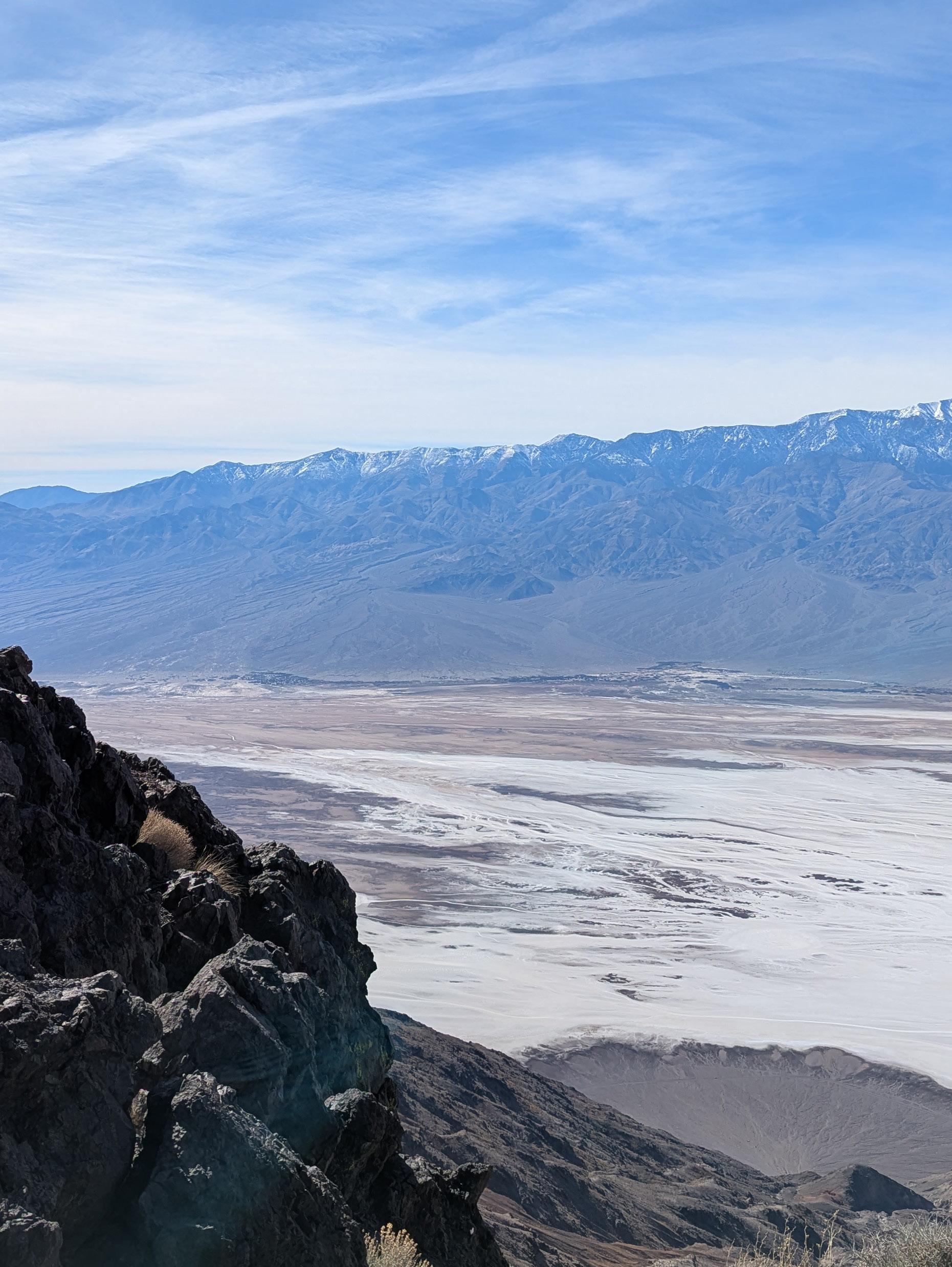
It’s an evolving world, and for the mining sector to keep up and continue attracting smart young workers, we need to evolve with it.
- Maggie Laverge

FROM APRIL 30 TO MAY 15, PDAC HOSTED STUDENTS, EARLY CAREER INDIVIDUALS, PROFESSIONALS, ALUMNI AND SPONSORS IN SUDBURY FOR ANOTHER EXCITING STUDENT-INDUSTRY MINERAL EXPLORATION WORKSHOP

S-IMEW has been providing unique hands-on opportunities for Canadian geoscience students and earlycareer individuals since 2007. As the industry expands and evolves, PDAC introduced some exciting ‘firsts’ for the workshop in 2025.
For two weeks, 24 students and one early-career representative from Barrick Mining experienced a wide array of tours, fieldwork and technical demonstrations, educational sessions, presentations, mentoring, networking events and more during the latest industryrenowned workshop.
Coming from post-secondary institutions and organizations across Canada, the 2025 S-IMEW cohort were once again hosted at Collège Boréal in Sudbury, Ont., and enjoyed a Welcome Reception including over 90 attendees at Dynamic Earth – an interactive earth sciences museum. This provided a wonderful opportunity for the students to network, as well as experience the engaging keynote presentation “Impacts and Career Cycles: From the Lab to the Boardroom” by FarExGeoMine’s Catharine Farrow.
This was some of the first professional sessions the diverse group were given, led by industry professionals and S-IMEW alumni. This included a new S-IMEW presenter: the young prospector Chris Lytwyn from CGW Mineral Resources, whose session titled “ Go For Gold: A Prospector’s Guide to Mineral Claim Development” explained how students can start prospecting; a presentation on Community Engagement (Indigenous consultation) by the Ontario Geological Survey (OGS) by Mathieu Levesque; Alumni Reflections presentations by four S-IMEW alumni Jérémie Langlois (2019), Sean Hillacre (2015), Geneviève Krasowski (2012) and April Belecque (2011) – the first female mine rescue officer in Ontario Mine Rescue history; and AP Consulting’s Angele Poitras’ presentation “It’s all about you!” featuring mental health challenges in remote work areas. This was the first time S-IMEW held a session about this important topic, and you can read more about it on page 36
Those were just a few of the many in-class presentations covering important subjects such as ESG, professional responsibility in exploration, interpretation of data, mineral economics , and emerging technologies and geophysics, among others. However, o ne of the
S-IMEW is a valuable taste of the knowledge and skills that geologists typically develop over years of experience.
- Daniela Garcia Ramos Barrick Mining

most invaluable features of S-IMEW is the interactive field experiences involving regional geology tours with local geologists, geophysical survey demonstrations, geochemical sampling exercises, exploration mapping and more.
Hands-on highlights from the 2025 workshop include the students being led through a {De}Risk Exercise by Osisko Metals’ Alexandria Marcotte. This exercise –another first for S-IMEW – had students learning how to physically de-risk an exploration project. Students were also given in-field demonstrations with Vale and Abitibi Geophysics during Geophysics Day, and the OGS further engaged the cohort on Geochemistry Day with an Exploration Scenario activity involving a friendly competition to find a mineral deposit and raise funds based on exploration results.
One of the most memorable activities during the annual workshop is the four-day field trip. For the first time since 2017, the students were taken to Timmins, Ont., where they visited Kidd Creek Mine, operated by Glencore Canada. Recognized as the deepest base metal mine in the world, the group toured the mine’s core shack and open pit lookout. Operating since 1966, Kidd Creek Mine is scheduled to close by the end of 2026, so the group was fortunate to have likely one of the last opportunities to visit the site, and were able to take some rock samples home with them.
S-IMEW also experienced the core shacks at Canada Nickel for the first time, explored the regional geology of Timmins, examined outcrops in Cobalt, and visited Onyx Gold where they were hosted by S-IMEW 2010 alumni Conor McKinley and Mike Warren. The group participated in core logging, core orientation and geotechnical logging, QA/QC, database management and 3D software stations in Onyx’s core shack. One of the most talked-about events, though, was the underground tours at Timmins West Mine and Bell Creek Mine, which are operated by Lake Shore Gold, a subsidiary of Pan American Silver.
The students were also given valuable networking opportunities during the two-week workshop, on top of the practical skills they gained. The S-IMEW Networking Reception, held at Full Beard Brewery in Timmins, was the first time an industry networking event was hosted during the field trip. This was in addition to the initial Welcome Reception at Collège Boréal , and the S-IMEW Finale hosted at Sudbury’s Timberwolf Golf Club.
One of the hallmarks of success for the annual student-industry workshop is hearing the positive experiences from S-IMEW students.
PDAC interviewed five S-IMEW attendees about their experiences during the 2025 workshop. This engaging Q&A is with Michael Ramey from the University of Waterloo, Daniela Garcia Ramos from Barrick Mining, Madison Dean from the University of British Columbia, Okanagan, Parke Fontaine from the University of Calgary and Gabriela Fuentes Waye from Saint Mary’s University.
What made you want to pursue geoscience and why did you decide to participate in S-IMEW?
| Michael : My decision to pursue geoscience was motivated by my combined love of the outdoors, science, geography and natural history. S-IMEW was recommended to me by prior participants from my university (University of Waterloo) and co-workers on my co-op work terms. Given my passion for mineral exploration, S-IMEW seemed like the perfect opportunity to develop my skills as a geologist, and connect with other students and professionals from across Canada.
| Daniela : From the very beginning, I’ve been fascinated and intrigued by the origin of mountains (the Andes in particular, which is where I come from), continents and the evolution of life. Geology brings together everything I am passionate about: science, adventure and problemsolving. I decided to participate in S-IMEW because I wanted to get a better understanding of all aspects of exploration and mining while learning from experts in the industry.
| Madison : Initially, I began my studies at the University of British Columbia Okanagan in the arts program, focusing on history. An Introductory to Earth Science course sparked my interest, and I soon fell in love with it. At the end of the year, I decided that this was exactly what I wanted to do. Soon after, I applied to switch my degree into the sciences and started from scratch. Since then, I’ve learned more about the field and decided that geology is where my interests lie most.
For why I participated in S-IMEW, it was by pure chance. The Earth and Environmental Science Department had sent out an email detailing an experience you could be nominated for relating to mineral exploration. I spoke with my mineralogy professor, who had coincidentally actually been a part of the 2014 cohort, and she encouraged me to apply, so I did.
| Parke : I wanted to pursue geoscience because I’ve always been curious about all aspects of the world around me, and wanted to figure out how it worked. I’d spent lots of time outdoors as a kid, and read lots of books about the natural world. The question of how the earth formed and what it looks like felt like a puzzle to solve, so geology was an easy choice for me. I decided to participate in S-IMEW because I hadn’t had much exposure to the world of mining in my program at the university, and I was wanting to learn about what the industry looked like outside of an academic perspective. My goal was to learn about the practical, industrial side of the mining and exploration sectors, and S-IMEW was the perfect place to do that. I also loved structural geology in school, and got the chance to ask industry professionals questions about its mining and exploration applications.
| Gabriela : Similar to a lot of other geoscience students, I didn’t know I wanted to pursue it as a career when I finished high school. I actually wanted to study astrophysics. But after changing my major four times over the span of two years, I dove straight into geology as my fifth and final chance to figure out what career I wanted to pursue. Once I learned how interdisciplinary and pragmatic geoscience was compared to the other sciences I tried, I was hooked. I saw S-IMEW as another chance to continue gaining hands-on experiences and learn about aspects of the mining industry that weren’t taught in the classroom.
Was there anything about geoscience, mining or exploration that you did not know or would not have known before attending S-IMEW?
| Michael : The technical aspects of exploration geology discussed at S-IMEW were touched on to some degree in geology classes at university, however the business and economics of mineral exploration was an interesting part of the industry which I had never considered before attending S-IMEW.
| Daniela : I learned something new every single day at S-IMEW. If I had to summarize, I would highlight the mines and types of mineralization in Sudbury Basin – an area I knew little about before, the de-risking exercise that introduced me to new concepts and perspectives on how junior companies operate and assess project value, and the visit to Geolabs – where I saw how the samples we routinely send are actually processed. These are experiences I don’t think I would have had access to otherwise.
| Madison : S-IMEW has taught me so much since I was a bit of a novice prior to going. The workshop dove into the ins-and-outs of the mining industry, exploration, and geoscience. This was done in a way that incorporated an overview of fieldwork exploration and the inner workings of what goes into mine development, which was something I had never seen before. I was thrilled to not only experience the hands-on work of the field but also gain a greater understanding of how stocks and other factors play into it. It was so exciting seeing all these potential paths I could be taking in the future, and I’m so thankful I was able to attend S-IMEW to be able to see everything.
| Parke : I didn’t know just how much non-geological expertise goes into exploration and mining. We got to learn about the finances and capital markets behind junior exploration companies, the methods of mining ore in underground mines, and the environmental standards that mines have to meet during operation and closure. There’s a whole ecosystem of expertise that exploration and mining requires – not just geologists. It was educational and fun to learn about the rocks of the Sudbury Basin, but also so valuable to learn about the other aspects as well.
| Gabriela : Within two weeks, S-IMEW allowed me to see what every stage of the mining process looked like – from greenfield exploration efforts all the way down to the shut down of a mine – which is not something I would have been able to experience on my own.
What surprised you the most about S-IMEW?
| Michael : The quality of the presentations, the number of events and tours, and the level of organization that went into running S-IMEW was staggering to me. PDAC, Krishana, Addison and all of the volunteers did an amazing job including activities covering all aspects of the mining cycle into a two-week workshop.
| Daniela : The rich content of the program in such a short time and the willingness of all the expert volunteers. It is truly a unique opportunity.
| Madison : There were a couple things that surprised me about S-IMEW. One of which was realizing just how important making connections to those in our field is. Talking to industry professionals can open opportunities that weren’t a possibility before. With that, speaking to those in related fields is just as important, as you never really know how those connections will help you in later days. Another thing was the cost and time it takes to put a mine into production. Mine exploration is such a journey from start to finish and requires so much collaboration from so many various fields. This was something that I never knew how much time was involved in organizing.
| Parke : It surprised me just how diverse the other students would be, despite all of us being at S-IMEW for similar reasons. Every single student who was there had different experiences in the industry and academia, and I got to learn so much about people across the country. I loved getting to know my cohort, and also meet some S-IMEW alumni and learn about their stories and career journeys. It was inspiring to see the wealth of experience that S-IMEW brings together.
| Gabriela : Not only was I surprised at how enriching the experience was, I was surprised by how many networking skills I learned during S-IMEW. The networking nights were incredibly daunting at the time, but they allowed me to get out of my comfort zone and gain a little experience before graduating that I wouldn’t have had otherwise.
Every single student who was there had different experiences in the industry and academia, and I got to learn so much about people across the country.
- Parke Fontaine University of Calgary

What was the most impactful experience or favourite memory from the two-week workshop?
| Michael : While there were a lot of amazing experiences at S-IMEW, my favourite part of the workshop was meeting other students from across the country who share my passion for geology and mineral exploration.
| Daniela : The visit to Bell Creek Mine – going underground was an incredible experience. It offered a rare opportunity to see the geology that we often only study in core or surface samples in 3D. Walking through tunnels surrounded by mineralized rock, observing the scale of the operations, and witnessing how engineering and geology come together to make mining possible was fascinating. It gives a completely different perspective on the industry, not only in technical terms, but also appreciation for the effort, innovation and teamwork required to bring a mine to life.
| Madison : Although hard to choose, the Kidd Creek and Timmins West mine visits are probably the highest on my list. I really enjoyed seeing Kidd Creek, as it was the first mine I’ve ever been in. Plus, my first time being in a core shack and getting to see some of the drilling they’ve done. Timmins West was another highlight for me, as it was my first time underground. It was so interesting to see all the rules for travel they had down there, as well as all the precautions that go into keeping the groundwork around the tunnels safe.
| Parke : My favourite memory from the workshop would have to be the exploration mapping day. It was fun getting to collaborate with a smaller group of S-IMEW students along with an experienced lead with the goal of mapping according to exploration grids. It was also a valuable lesson in how unpredictable the field can be (given the amount of swamp and snow we trudged through).
| Gabriela : It’s hard to choose what my favourite memory from S-IMEW is, but most of the highlights include the site and outcrop visits. My favourites were the world-famous Kidd Creek Mine, going
underground to the Timmins West Mine, and the fallback breccia and shatter cone outcrop stops. The most impactful aspect of the workshop that I will never take for granted was making lifelong connections with the other geoscience students and geoscientists that were a part of it.
How would you describe S-IMEW to your friends, peers or family?
| Michael : A once-in-a-lifetime opportunity to see world class mineral deposits, learn from industry professionals, and connect with other passionate geology students from across Canada.
| Daniela : S-IMEW is a valuable taste of the knowledge and skills that geologists typically develop over years of experience. It provides an early exposure to practices and concepts that are essential in exploration and mining.
| Madison : I would describe S-IMEW as an incredibly educational experience. Everyone there was so welcoming and friendly. This included the organizers, industry leaders that were brought in, and the other participants from the workshop that I had the pleasure to spend the two weeks with. For my peers back home, I would say that it was an invaluable opportunity, and encourage anyone who is able to attend to do so.
| Parke : I would describe S-IMEW as an unforgettable experience where you get to look at cool rocks with the best minds in the country. It’s not just a learning trip, but a chance to learn about and build relationships with inspirational people who are building the future of exploration and mining.
| Gabriela : I would describe S-IMEW as an unforgettable networking and educational experience that exposes 26 geoscience students from all across Canada to the mining industry.

The 17th annual Student-Industry Mineral Exploration Workshop (S-IMEW) will return to Sudbury from April 29 to May 14, 2026.
To participate, geoscience students must be nominated by their departments. Each Geoscience department in Canada can nominate up to two students. To learn more about the workshop, and access the 2026 nomination package, please visit pdac.ca/s-imew
2025 SPONSORS
| PREMIER SPONSOR
Barrick Mining
| PLATINUM SPONSORS
Gold Fields
Ministry of Energy and Mines (Ontario)
| DIAMOND SPONSORS
Agnico Eagle
Alamos Gold Inc.
| GOLD SPONSORS
Foraco
SGS Canada
Teck
| SILVER SPONSORS
IAMGOLD Corporation
Major Drilling

| IN-KIND SPONSORS
Abitibi Geophysics
Agnico Eagle
Allied Gold Corporation
Brunswick Exploration
Canada Nickel
Earth Ex Geophysical Solutions
Errington Metals Inc.
Evolution Mining
Exiro Minerals
ExMin Consulting
Exploration Services
FarExMineGeo Ltd.
Geological Survey of Canada
Geoscience North
Geoscientists Canada
Glencore Canada
IAMGOLD
Kenorland Minerals
Knight Piésold Consulting
Lake Shore Gold a subsidiary of Pan
American Silver
Laurentian University
Magna Mining Corp.
Major Drilling
Mineural
Modern Core
NorthX Nickel Corp.
Novaminex
Ontario Ministry of Energy and Mines
Ontario Securities Commission
Onyx Gold
Orix Geoscience
Osisko Metals
Proforma Adam Promotions
Qualitica Consulting Inc.
Resourceful Geoscience Solutions
Ronacher Mackenzie Geoscience
SGS Canada Inc.
SPC Nickel Corp.
SRK Consulting
Standard Uranium
Talon Metals Corp.
Teck Vale
Willeson Metals

S-IMEW STUDENTS LEARN TO NAVIGATE MENTAL HEALTH CHALLENGES IN REMOTE MINING WORK BY LINDSAY KELLY
It can be exhilarating and lucrative. But it also requires employees to be away from home for weeks or months at a time, straining personal relationships and testing the resolve of the most seasoned workers.
“I think it’s something in your soul that you have, because other people don’t get it,” Angele Poitras, a psychological health and safety advisor, said to a room full of geoscience students last spring. “Have you thought about what your mental health is going to look like? Because it’s something in these fields that has not been talked about a lot.”
Poitras was speaking as a session leader during the 2025 Student-Industry Mineral Exploration Workshop (S-IMEW) hosted by PDAC in Sudbury, Ont., April 30 – May 15, 2025. The two-week, all-expenses-paid workshop gives geoscience students from across Canada the opportunity to participate in hands-on learning and interact with industry professionals as a way of introducing them to the many careers available in the exploration industry.
Poitras was a pioneer in her previous role as a psychological health and safety advisor with Workplace Safety North, a training organization serving the mining, forestry and pulp and paper industries in northern Ontario.
When she first took on the position, mental health programs simply didn’t exist for male-dominated industries, she noted, particularly in mining, pulp and paper, forestry, and heavy industry. Now, as a consultant, Poitras’ training targets the remote and fly-in, fly-out (FIFO) sector, a niche area of mining that appeals to a unique demographic of workers. She’s hopeful the conversation around mental health in mining is changing.
“Wouldn’t it be wonderful that, any time we talked about mental health, we were happy rather than being scared or negative or afraid?” Poitras said. “You’re the generation that’s going to change that culture around mental health.”
Statistics suggest she’s right to seek change.
According to the Centre for Addiction and Mental Health, one in five Canadians is struggling with their mental health, at a cost to the Canadian economy of $50 billion a year, Poitras said, and that’s trending upwards.
Stigma, shame, and a fear of repercussions at work – being passed over for promotion, or being ostracized by coworkers – still deter many people from seeking treatment, she noted, even though many workplaces now have mental health services built into their employee assistance programs (EAPs).
It’s natural, she said, for people’s mental health to fluctuate. But it’s important to know how to recognize the signs they may be struggling, and to prioritize their mental health before putting them or their colleagues in a dangerous situation. “It’s OK not to be OK,” Poitras said. “You just can’t stay there.”
One way to help them navigate their own mental health journeys is to consult the Mental Health Continuum Model, a tool designed in the U.S. and promoted by the Mental Health Commission of Canada.
It helps people identify what they’re feeling across a range of emotions, and then lays out actions they can take to address any mental health challenges they’re experiencing. If they’re feeling anxious, tired, restless and avoiding social contact, for example, they’re likely struggling mentally. According to the continuum, people experiencing these feelings should identify the signs of distress, speak with someone, and seek help as well as social contact.
Poitras said the Continuum can be used as a way to check in with their own mental health, but also with colleagues who they may notice are struggling. “Oftentimes, when somebody says to us, ‘Do you want to talk? I’m ready to listen,’ that’s all they need,” she said.
You may never know the impact you’ve had on another human being, but you will have an impact.

“But if you are going to ask somebody, ‘Are you okay? Do you want to talk?’ Make sure you have the time to listen.”
Alternatively, Poitras said, someone can alert a supervisor or manager if they notice a colleague is struggling mentally. “Just don’t let it go,” she advised. Poitras emphasized it’s important to reserve judgement about others who may be living with a mental challenge or illness.
Someone could be a talented geologist, for example, but could also live with bipolar disorder, Poitras said. “When we come clean and we share that we live with a mental illness, or we have a mental health challenge, we want you to flip the coin,” she said. “Even if you know that about us, flip the coin and see the other side of our person.”
It was sage advice for 23-year-old Katrina Ouellette, a recent graduate of McMaster University, who said she was “pleasantly surprised” that mental health was on the agenda for S-IMEW this year, especially as it relates to remote mining work.
“I’m very close with my family. It’s very hard for me to be away from them,” said Ouellette, who’s working as a geologist-in-training at WSP in Hamilton. “What if I’m having a bad day and I just can’t reach them, and I just can’t get that hug or I can’t get that pep talk from my mom?”
Speaking openly about her own mental health challenges, Ouellette said she’s encouraged to see that mental health is being taken more seriously in mining today.
If someone is spending a long day in the field, it’s routine to eat properly and get enough sleep, she said, but ensuring their mental health is in order is far less common.
At WSP, where one of her jobs is to cut drill core, she said she’s taken days off when she didn’t feel like she was in a good place mentally, because she didn’t want to put herself or other people on her team at risk. She was grateful to have the support of her team. “No one made me feel any less than for that,” she said.
“So I was really appreciative to have, already, that kind of perspective in my workplace on it.”
Ouellette said she’d be taking Poitras’ guidance back with her to work; in particular, she said the Mental Health Continuum Model would be a good resource for her going forward. “I’m definitely going to print that and put it on my fridge.”
Ultimately, Poitras said, it’s up to a professional psychiatrist or psychologist to make an official diagnosis of mental illness, and she cautioned against looking online for answers.
But for quick ways to alleviate stress, Poitras suggested students close their eyes, think of their favourite smell and breathe deeply, hold it for a minute, and exhale. That type of deep breathing helps induce calm, regulates breathing, and reduces anxiety, she said. They can also thank somebody, something she called “good for our heart and good for our mental health.”
“You may never know the impact you’ve had on another human being,” she said, “but you will have an impact.”
Lindsay Kelly has been writing about the mineral exploration and mining industry for over two decades. Her work primarily focusses on Northern Ontario, and can be seen in various newspapers and online outlets across the province.
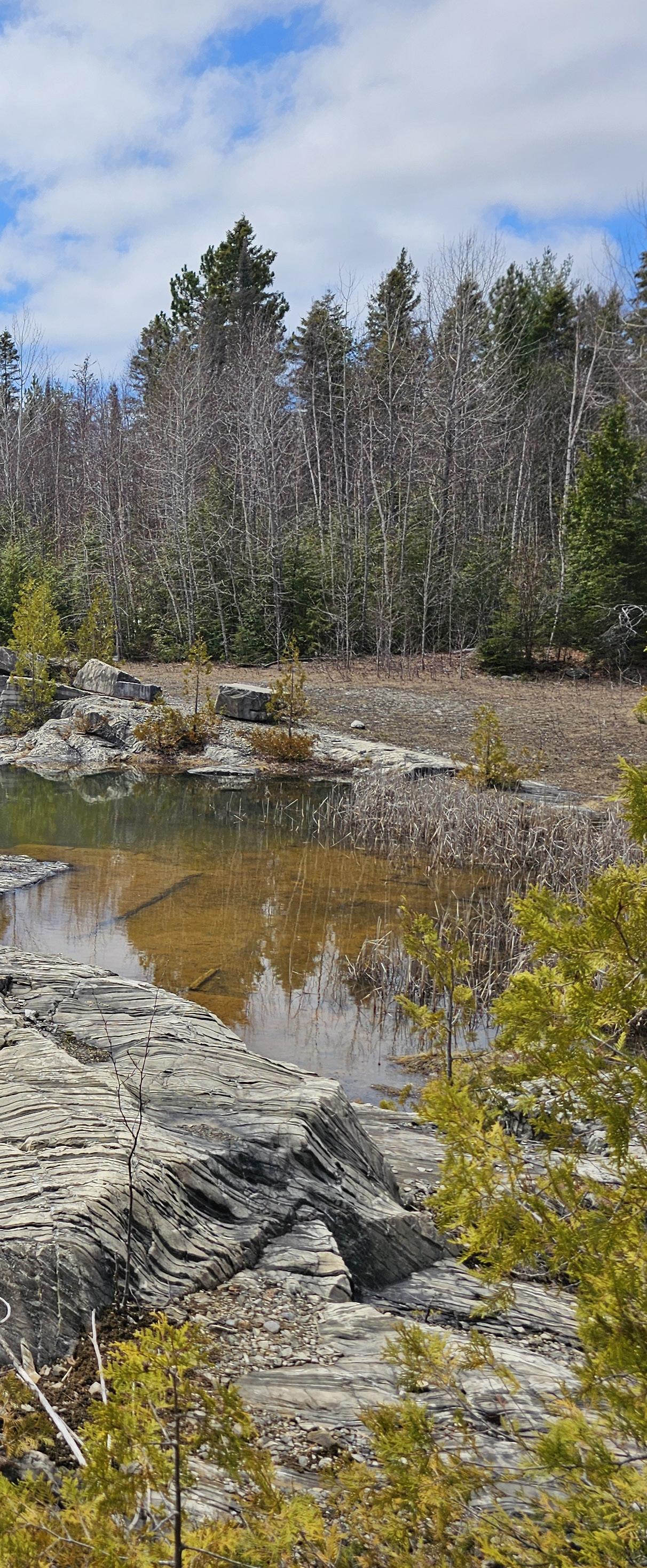


In October, 2014, commercial mining ceased at Eswatini’s Ngwenya Mines. This iron oreproducing site holds the location of what’s known as the Lion Cavern – the oldest mine in history.
40 millennia ago, the ancestors of Africa’s San peoples painted prolifically in caves within a small country called Eswatini (previously known as Swaziland prior to 2018) . Here, the Indigenous group primarily used red ochre (haematite) for their cave paintings – as well as for cosmetic and ritualistic purposes – which led ancient peoples to seek a consistent supply of this important mineral.
Lying on the north-western border of Eswatini, the San’s ancestral communities found a mountainous, land-locked region that was rich in red ochre, as well as a specularite – a type of iron ore that has no surface oxidation, giving it a glittery appearance.
Along the surface of the Barberton Mountain is where these ancient peoples began to mine for ochre and haematite. As the second-largest mountain of the country, this particular spot is referred to as “Ngwenya” because its profile resembles a large crocodile. The iron-rich deposit found here is also considered one of the oldest geological formations of its kind in the world.
It is here that a form of mining activity older than any other known site in history began. It is also significant compared to other ancient mine sites, as the Ngwenya area was active far before Europeans arrived with modern tools, and the specularite extracted here was not found in any nearby country. This made the rare mineral an important inclusion in ceremonial practices, and
is said to have only been allowed to be used by high priests and chiefs.
The discovery of this ancient mining activity was made after more modern commercial mining in the Ngwenya region began in the 1800s. At this time, prospecting work in the area was being done, and over the next few decades, Ngwenya’s ironrich deposits were listed on maps created by the Swaziland Corporation. In 1946, the Swaziland’s Geological Mines and Survey department started excavating, with over 30,000,000 tonnes of ore with a mean value of 60 per cent metallic content extracted by 1957. The following year, Anglo American Corporation of South Africa began developing the site further, with full-scale ore production taking place in 1964 under the newlyformed Swaziland Iron Ore Development Corporation.
It was in 1964 that ancient tools in-and-around cavelike structures were found near the main excavation site, including hand-made axes, shovels and more. South African archaeologist Adrian Boshier was brought in to examine the area, and together with a young archaeologist named Peter Beaumont, the pair excavated a large, hollow structure in the Bomvu Ridge on the side of the Barberton Mountain that resembled a lion’s den. Ancient charcoal from burned wood was found in the cave-like structure, and samples of the charcoal – along with the tools found in the same area – were sent for radiocarbon dating in labs at Yale University in Connecticut, and the University of Groningen, Netherlands.
The results from the labs showed that the charcoal found at the site was from approximately 43,000 BC, making what is now known as the Lion Cavern the world’s oldest mine.
Intriguingly, the stone tools that were also sent to the labs for dating were from over 20,000 BC, which

It
demonstrates
a cultural
tradition of growth and technological development through history – from excavation by hand and wood, to stone then iron tools.
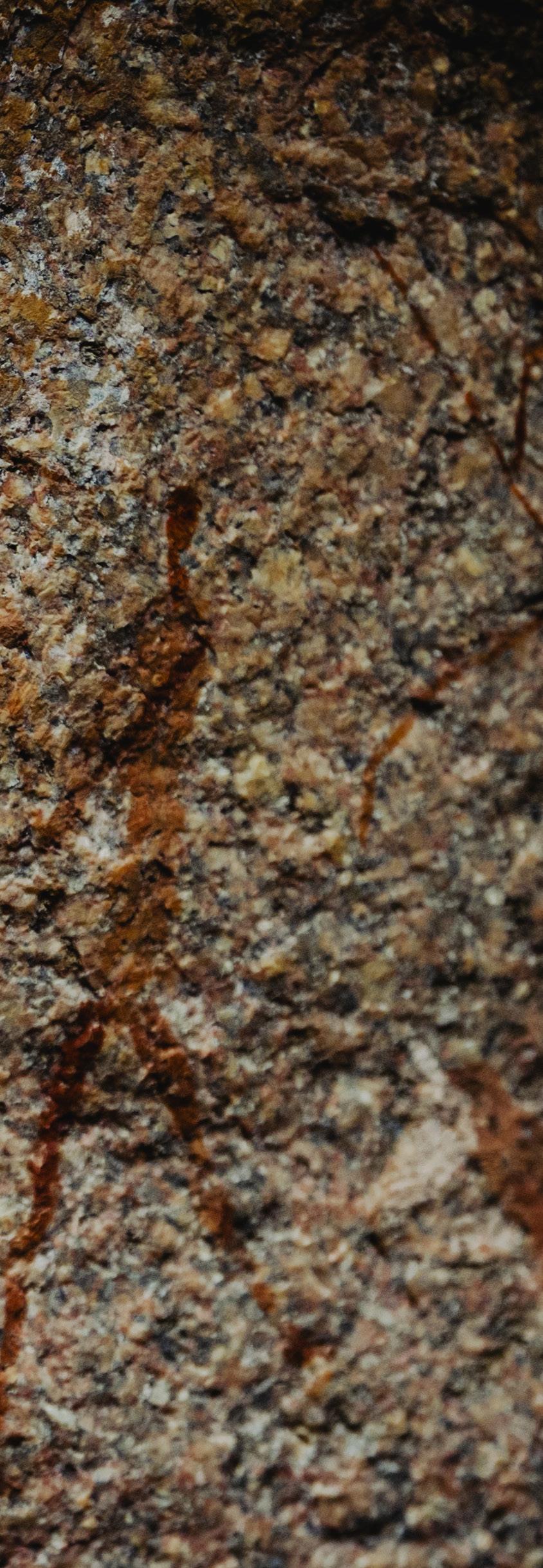
is near the end of the African Middle Stone Age. These specialized picks, chopping tools and hammers were made of dolerite (stone), and showed that a different community of peoples had come to the area and expanded on the mining activity that had started with Lion Cavern many millennia earlier. Archaeological work continued into the 1970s at the Ngwenya Mine site, which lead to the discovery of more advanced iron tools and activities in a spot they called Castle Cavern. This ‘newer’ activity began around 400 AD during the Early African Middle Ages by settlers from northern Africa, who were adept at smelting and fashioning iron into weapons and tools.
When viewed together with the charcoal and other evidence, the archaeologists summarized that the area around the Ngwenya Mine saw relatively continuous mining activity for tens of thousands of years.
This site is extremely important to the Eswatini people, as it demonstrates a cultural tradition of growth and technological development through history – from excavation by hand and wood, to stone, then iron tools. This evolving industrial development continued into the 1900s, with the commercial iron ore excavation at the Ngwenya Mine boosting the economy of the region, helping build new railway lines and establishing relationships with international trade partners.
By the time commercial mining ceased in 1977, up to 28 million tonnes of iron ore had been extracted. With an estimated 50 million tonnes still available for processing, the Kingdom of Eswatini granted permission to the Indian-owned Salgaocar Swaziland Limited to reopen the Ngwenya Mine. Reopening ceremonies were held in October 2011. However, amid a sharp drop in global iron-ore prices and company challenges, the mine closed again in October 2014.
The area around Lion Cavern has been incorporated into Malolotja Nature Reserve as a protected site. It was submitted by the Swaziland National Trust Commission (SNTC) and the Swaziland National Museum for UNESCO World Heritage status, which remains under consideration.

Karen Rees PRESIDENT
Scott Parsons FIRST VICE PRESIDENT
Conrad Dix SECOND VICE PRESIDENT
Rosario Astuvilca-Rojas INCLUSIVE MINING
Charles Beaudry ORE GROUP
Kurt Breede SCOTIABANK
MaryAnn Crichton HATCH LTD.
Conrad Dix AGNICO EAGLE
Lana Eagle CONSULTANT
Siri Genik BRIDGE©
David Harquail FRANCO-NEVADA CORPORATION
Mary Louise Hill LAKEHEAD UNIVERSITY
Roger Lemaitre HOMELAND URANIUM CORP.
Jessie Liu-Ernsting FIREFLY METALS
Terry Lynch POWER METALLIC MINES INC.
Lisa McDonald EXECUTIVE DIRECTOR
Maria Milanova SECRETARY
James Lusby TREASURER
Gordon Maxwell GJM MINING
Stuart McCracken TECK RESOURCES LIMITED
David Murray RESOURCEFUL GEOSCIENCE SOLUTIONS
Scott Parsons ALAMOS GOLD
Valerie Pascale MODERN CORE
Karen Rees INDEPENDENT CONSULTANT AND DIRECTOR
Keith Spence GLOBAL MINING CAPITAL CORP.
Rob Stevens PAKAWAU GEOMANAGEMENT INC.
Jeff Swinoga EXPLOITS DISCOVERY CORP.
Kerem Usenmez VOLTA METALS LTD.
Mary-Carmen Vera
Valerie Wilson SLR CONSULTING (CANADA) LTD.
Ariya Andrighetti MANAGER, CONVENTION
Alexandra Armstrong ANALYST, INDIGENOUS & REGULATORY AFFAIRS
Scott Barber SENIOR MANAGER, COMMUNICATIONS
Gillian Blakey COORDINATOR, CONVENTION EXHIBITS
Amy Buchanan MANAGER, CONVENTION EXHIBITS
Lynn Bodwell CONVENTION MARKETING LEAD
C urtis Byron WEB COORDINATOR , COMMUNICATIONS
Shanti Chary DATABASE COORDINATOR
Christy Clough COORDINATOR, CONVENTION
Michael D’Amelio COORDINATOR, CONVENTION PROGRAMMING
Sandra Doig COORDINATOR, MEMBERSHIP
Louise Healion OFFICE ASSISTANT
Lynda Joyet SENIOR MANAGER, CONVENTION EVENTS & SPONSORSHIP
Madina Kaytmazova MANAGER, IT & ADMINISTRATION
Sonali Khatokar COORDINATOR, CONVENTION PROGRAMMING
Jeff Killeen DIRECTOR, POLICY & PROGRAMS
Nicole Kulp ANALYST, SUSTAINABILITY
Amit Kumaria MANAGER, BUSINESS DEVELOPMENT & STRATEGIC PARTNERSHIPS
Joan Marilyn Leslie CHIEF ACCOUNTANT
Romika Leslie COORDINATOR, SPONSORSHIP
Serena MacDonald ANALYST, CRITICAL MINERALS, GEOSCIENCE & INNOVATION, HEALTH & SAFETY
Florence MacLeod MANAGER, MEMBER ENGAGEMENT & OUTREACH
R an Maoz ANALYST, TAX POLICY & CAPITAL MARKETS
Lisa McDonald EXECUTIVE DIRECTOR
Krishana Michaud MANAGER, STUDENT & EARLY CAREER PROGRAM
Maria Avramova Milanova SECRETARY, DIRECTOR, OPERATIONS & HUMAN RESOURCES
Andrea Murdoch EXECUTIVE ASSISTANT
Alissa Nardini COORDINATOR, CONVENTION EXHIBITS
Sarah Nazar MANAGER, CONVENTION PROGRAMMING
Ozioma Nwabuikwu COORDINATOR, COMMUNICATIONS
Joshua Opolko IT COORDINATOR
Maureen Owens COORDINATOR, CONVENTION PROGRAMMING
Addison Pennie COORDINATOR, STUDENT & EARLY CAREER PROGRAM
Nicole Sampson DIRECTOR, CONVENTION
Steve Shapka ANALYST, GOVERNMENT RELATIONS
Andy Stanleigh PUBLICATIONS EDITOR & DESIGNER
Kulpreet Thukral COORDINATOR, MEMBERSHIP
Patricia Tucci COORDINATOR, CONVENTION EVENTS & SPONSORSHIP
Petrona Tulloch STAFF ACCOUNTANT
Stefanie Wolf MANAGER, CONVENTION OPERATIONS

